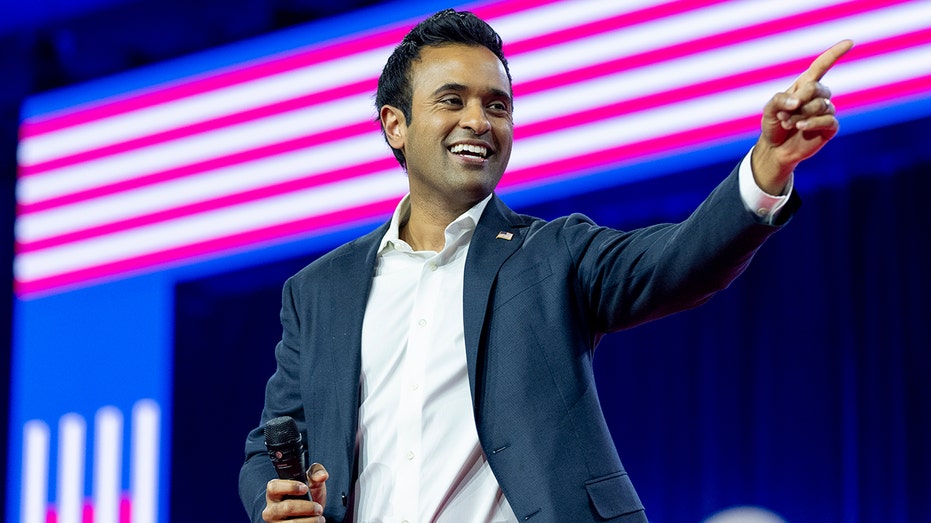Indian military ramps up AI capabilities to keep up with regional powers
India is making new financial investments in AI to aid its military. Delhi recently unveiled a robot that can remove unexploded shells and double as a stretcher for injured troops.

CHENNAI, India — India, a country blessed with a strong high-tech industry, is applying its brains not just to commercial artificial intelligence (AI) but also to its military, as its neighbor and regional rival China continues to pour billions into AI research.
A 2023 report by an Indian think tank, the Delhi Policy Group, said India spends around $50 million a year on AI. The report noted that while India's spending was a "good initial step," it was "clearly inadequate compared to our primary strategic challenger, China, which is spending more than 30 times this amount. If we are not to fall behind the technology cycle, greater investments will have to be made, primarily to promote the indigenous industry players."
Antoine Levesques, a research fellow at the International Institute for Strategic Studies (IISS) told Fox News Digital India "is pursuing its own efforts to build a national sovereign AI capability that can be used for its defense."
"India has very ambitious plans," he added. He cited the need to acquire foreign-made chips to "bolster the AI hardware capacity," noting the "abundance of talent in its tech industry already."
INDIAN ARMY GENERAL SAYS SITUATION ON BORDER WITH CHINA IS 'UNPREDICTABLE'
In October, the military launched a robotic buddy, which was able to carry out tasks such as traverse and scout rugged terrain, remove unexploded shells and double as a stretcher for injured soldiers. It has two arms and two cameras and a platform with two additional cameras. The robot will be manually operated by a ground controller. The army may further develop this technology. The country's navy is also believed to have autonomous aquatic robots that can go where humans cannot.
"This battery-powered platform is built to withstand rugged terrain and measures one meter by one meter," an Indian army official told The Times of India.
The Indian Army's elite unit, the Signals Technology Evaluation and Adaptation Group (STEAG), is researching and evaluating the implementation of emergent technologies such as AI and other potential updates in the ever-evolving arena of modern warfare.
According to an analysis by Levesques, both India and the U.S. have, and are partnering in AI.
At a meeting in 2022, U.S. Secretary of Defense Lloyd Austin met with his Indian counterpart, Raksha Mantri Shri Rajnath Singh, at the ninth ADMM (ASEAN Defence Ministers Meeting), and AI was among the topics they discussed. Also that year, U.S. President Biden and India's Prime Minister Modi announced a partnership known as the U.S.–India Initiative on Critical and Emerging Technologies.
HOW ARTIFICIAL INTELLIGENCE IS RESHAPING MODERN WARFARE
Levesques described an abundance of talent in India's tech industry. He also noted that India’s higher English proficiency level could give it a slight edge in "availability of talent" but said that's "not enough to counterbalance China’s capability."
"Adapting U.S. technology and developing your own both take time," he added. He also noted that India is doing both of these in terms of economic and defense sectors.
Patrick Cronin, the Asia Pacific security chair at the Hudson institute in Washington, D.C., told Fox News Digital, "Generative AI (based on large language models) in particular is leading to rapid advances for understanding a common operating picture, so militaries can use this for intelligence to see what’s happening on a battlefield."
AI may help gauge what overseas nations such as Pakistan and China are doing. Cronin explained that, akin to ChatGPT (also a form of generative AI), this technology can be used for providing information on real-time simulations and exercises bringing information as to what could happen.
There is potential military use in three sectors — intelligence, training and education.
Cronin warned that "China has a robot army" that possesses multiple autonomous drones in its arsenal, but he still believes that wider use of "autonomous systems" in general is "5-10 years away."
WHAT IS ARTIFICIAL INTELLIGENCE (AI)?
A senior Indian defense ministry official told Deutsche Welle AI-powered drones and robots could patrol borders and reduce the need for human intervention in dangerous situations. Fox News Digital's requests for comment from the Indian military were not immediately answered.
Cronin noted concerns, including the belief that AI, like any developing technology, could be used for many purposes, including those that are nefarious, such as the use of deepfakes to sow disinformation and other negative aspects.
Thousands of Indians and Chinese at overseas universities are studying artificial intelligence. Cronin said he felt India has had an edge in the civilian sector of AI development but that it was countered by the Chinese having a military system that’s more "centralized and well-funded."
"When you think of facial recognition and tie that to a distant battlefield with satellite imagery and to a drone that could be lethal, this is something that you could not have done 30–40 years ago, but now it is easily done," Cronin added.
"The outcome of war is still horrible and tragic, and it needs to be as ethical, precise, justifiable and limited as possible. India has a leading role to play potentially in the debate of the growing use of AI in the battlefield or society in general. These issues are still in the beginning stages of what could be the future laws of war and the guardrails of high-tech civilization."
India's military continues to further its ambition and research in the field of AI as it seeks to level the playing field with China.



